
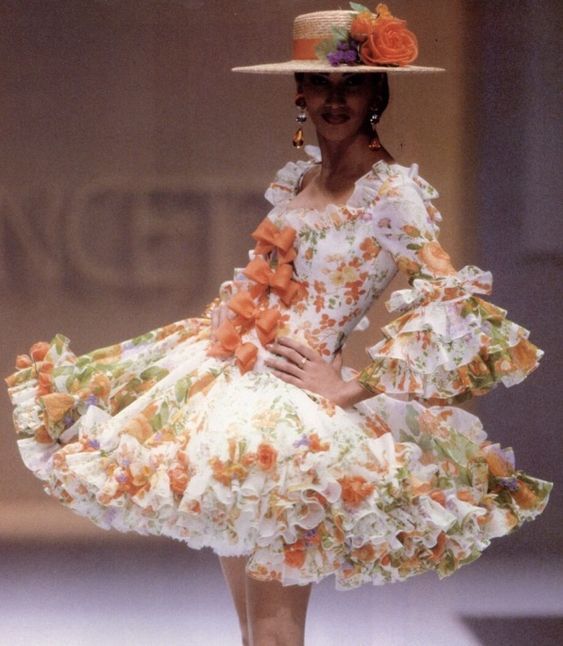






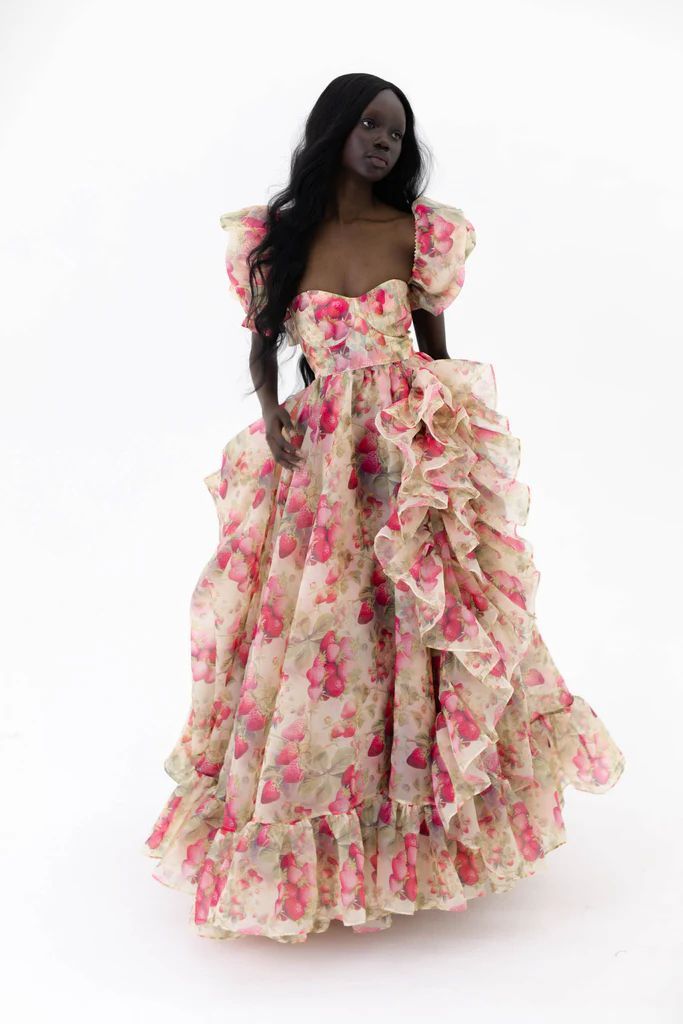
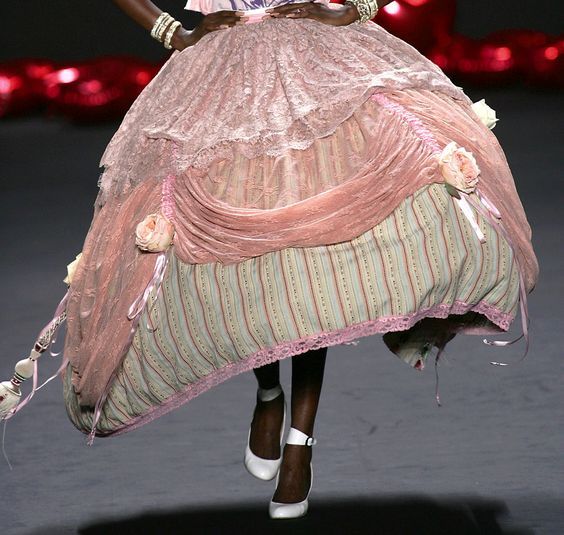
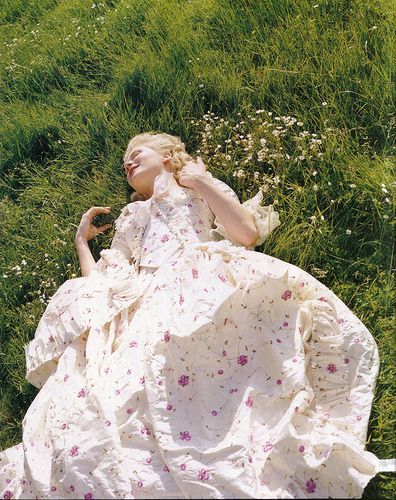






*
 James Tissot, Young Lady In A Boat, 1870
James Tissot, Young Lady In A Boat, 1870
James Tissot, the painter of the idle and glamorous lives of the wealthy Parisians, was popular and received critical acclaim in his time but today he is in the shadow of the more revolutionary painters from his time such as Monet or Degas. Tissot was extremenly prolific and left us many, many wonderful genre paintings of people enjoying everyday life; going for walks, sipping tea, going on balls, gossiping, children playing, reading books and lying in a hammock, spending afternoon gliding on boats or enjoing a picnic under a grand old chestnut tree… All of his paintings are very meticulous and detailed and just a joy to gaze at. Tissot put a particular emphasis on the clothing the figures in his paintings are wearing and that is no surprise, for his father was a succesful drapery merchant and his mother designed hats.
My favourite Tissot painting at the moment is “Young Lady In a Boat”, painted in 1870, just a year before Tissot’s departure for London following the outbreak of the Franco-Prussian war. It shows a pensive young woman dressed in a sumptuous white dress with ruffles and a hat with striped ribbons. A fan in her hand. A flower bouquet in front of her and a little pug behind her. I particularly love her pose; she is holding her chin with her hand and gazing into the distance. Her pinkie finger is touching her lip, what a dainty pose. You can see it also in the drawing bellow which is one of the studies for the painting that Tissot made. Is she sad or just bored? Or both. Is she suffering from ennui? The pug on the other hand looks not pensive but perplexed and he certainly adds to the charm of the painting with his humorous face expression, the face which a critic at the time compared to a monkey. The lady’s hat with those striped ribbons and her hair bring to mind the portraits of the Directoire period (1795-1800) and this was no accident, for Tissot had purposefully tried to emulate the styles of the period and this is evident in a few of his paintings from that time period. Directoire period was a glamorous time of frivolity after the terrors of the revolution and perhaps this is why Tissot decided to emulate the style.
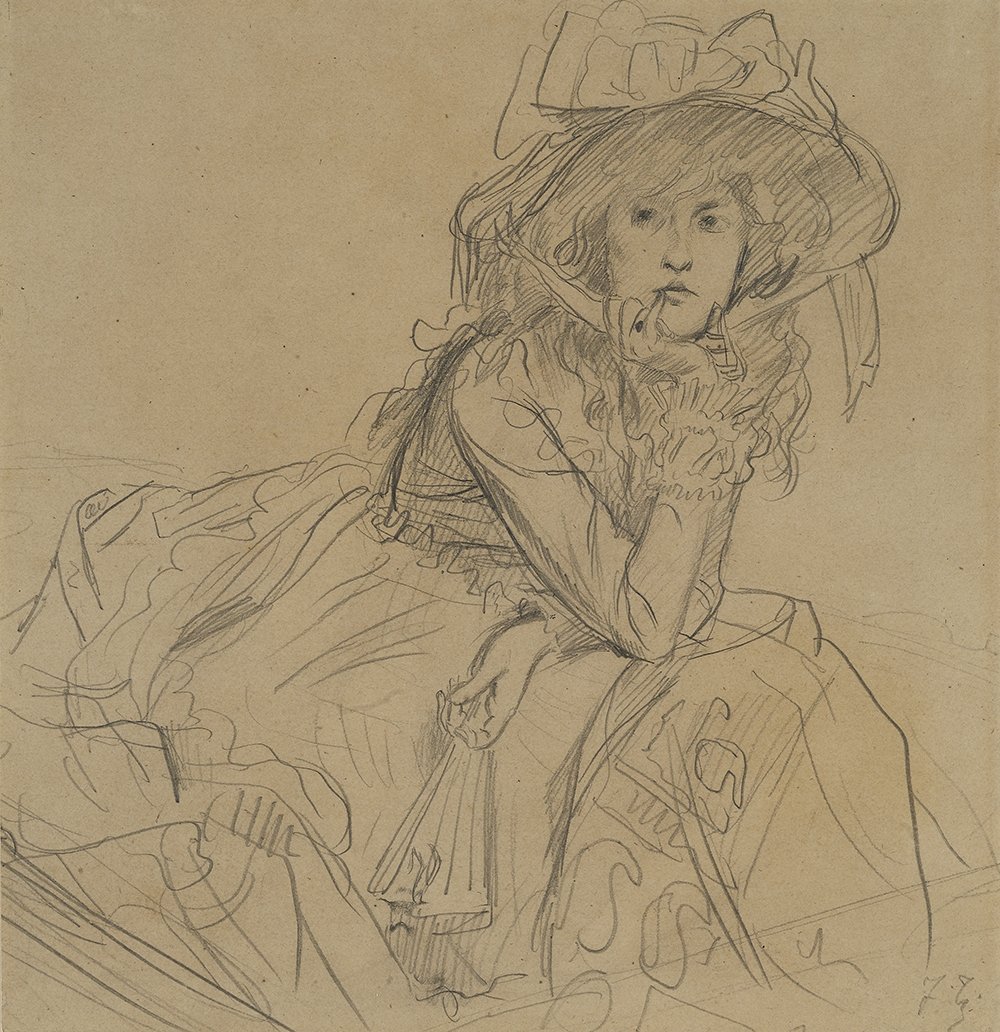
James Tissot, Study for Young Lady in a Boat, c.1869–70. Graphite on buff wove paper, 25.3 x 24.3 cm
Tissot’s paintings are really like a dream; beautifully dressed women lazing around in splendid gardens, gliding on boats, sipping tea in warm salons whilst the children are playing hide and seek. These are people, mostly women, that seem to have everything but there is always a hint of sadness in their faces, as if despite having everything they aren’t fully happy. There’s always a sense of something missing from their lives, perhaps they feel the weight of the contraints on them, both of their corsets and of their society, maybe too much idleness brought too little to fight for or desire, maybe they don’t know what they want but just feel a certain void inside. A void that perhaps a little pug could solve.
“Sad veiled bride, please be happy
Handsome groom, give her room
Loud, loutish lover, treat her kindly
(Though she needs you
More than she loves you)”
(The Smiths, I know it’s over)
 George Theodore Berthon, Portrait of Mrs. William Henry Boulton (Harriette), 1846
George Theodore Berthon, Portrait of Mrs. William Henry Boulton (Harriette), 1846
I can remember how good I felt inside
When the preacher said “Son, you may kiss the bride”
But as I leaned over to touch her pretty lips
I felt it all slip away through my fingertips
(Bruce Springsteen – Stolen Car)
The wedding day can be the happiest day of your life – or the most tragical one. That depends on many factors; whether a girl is marrying a prince or an ogre (no offense Shrek), whether her husband to be has a mad wife in the attic or not, whether his marriage is just a devise to rob you of your family inheritance. Nontheless, the image of a bride, let’s imagine a Victorian era bride, is always a charming one; dressed in white and covered with a veil, she might as well be a ghostly creature from another realm. So ethereal and eerie is the figure in white. Walking down the isle, veil covering her blushing cheeks, dressed in a white gown and looking splendid in all her virginal glory, sweetness, hopes, anticipation, all fill her fast beating heart. In a step or two, her destiny will be decided, her life changed forever… is she walking towards the altar or being led to the dungeons where her execution is to be held.
Queen Victoria set the standard for white wedding gowns in 1840 when she married Prince Albert, but that is not to say that white wedding dresses were not worn before; they were, but from that point on they became the statement. Her wedding day was an intensely happy event and she loved being married to Albert, but not every woman in Victorian era felt quite the same way, despite the idealisations we nowadays may have of their time and their lives, doting wife and angel in the house was often a bored and lonely woman. Let’s take Toulmouche’s painting “The Reluctant Bride” (below) as an example; just look at her face expression, she is absolutely not thrilled about it. Or Sophie of Württemberg (1818-1877), the Queen of Netherlands, who was buried in her wedding dress because she said that her life ended the day she got married.
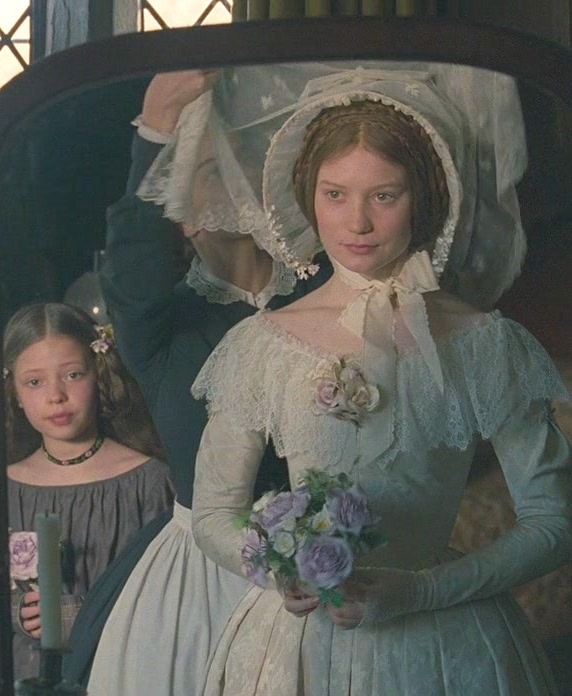
Let’s take a look at Jane Eyre’s state of soul in chapter 36 after the secret was revealed:
“Jane Eyre, who had been an ardent, expectant woman–almost a bride, was a cold, solitary girl again: her life was pale; her prospects were desolate. A Christmas frost had come at midsummer; a white December storm had whirled over June; ice glazed the ripe apples, drifts crushed the blowing roses; on hayfield and cornfield lay a frozen shroud:lanes which last night blushed full of flowers, today were pathless with untrodden snow; and the woods, which twelve hours since waved leafy and flagrant as groves between the tropics, now spread, waste, wild, and white as pine-forests in wintry Norway. I looked on my cherished wishes, yesterday so blooming and glowing…”

Jane Eyre’s wedding was so short and hasty that she must have been thinking, again quoting The Smiths:
I know it’s over
And it never really began
But in my heart it was so real
Apart from the obvious contrast between joy and disappointment that a bride inevitably faces, the figure of a bride in white, an innocent pure maiden, can serve as a visual contrast to something darker in the story, for example: Jane Eyre meets her husband to be Mr Rochester’s real mad violent wife in the attic, or the young naive bride of Bluebeard, when left alone in his castle, discovered his dark, bloody and blood-chilling secrets; also Elizabeth in Mary Shelley’s “Frankenstein” who is strangled on her wedding night by the Monster that Doctor Frankenstein had created as a revenge to the Doctor who refused to make him a female companion.
And to end, here is perhaps the most eerie bride out of them all: Miss Havisham from Charles Dickens’s novel “Great Expectations”, a bride who is decaying and rotting under her silk and lace garments:
“In an arm-chair, with an elbow resting on the table and her head leaning on that hand, sat the strangest lady I have ever seen, or shall ever see.
She was dressed in rich materials – satins, and lace, and silks – all of white. Her shoes were white. And she had a long white veil dependent from her hair, and she had bridal flowers in her hair, but her hair was white. Some bright jewels sparkled on her neck and on her hands, and some other jewels lay sparkling on the table. Dresses, less splendid than the dress she wore, and half-packed trunks, were scattered about. She had not quite finished dressing, for she had but one shoe on – the other was on the table near her hand – her veil was but half arranged, her watch and chain were not put on, and some lace for her bosom lay with those trinkets, and with her handkerchief, and gloves, and some flowers, and a prayer-book, all confusedly heaped about the looking-glass.
It was not in the first few moments that I saw all these things, though I saw more of them in the first moments than might be supposed. But, I saw that everything within my view which ought to be white, had been white long ago, and had lost its lustre, and was faded and yellow. I saw that the bride within the bridal dress had withered like the dress, and like the flowers, and had no brightness left but the brightness of her sunken eyes. I saw that the dress had been put upon the rounded figure of a young woman, and that the figure upon which it now hung loose, had shrunk to skin and bone. Once, I had been taken to see some ghastly waxwork at the Fair, representing I know not what impossible personage lying in state. Once, I had been taken to one of our old marsh churches to see a skeleton in the ashes of a rich dress, that had been dug out of a vault under the church pavement. Now, waxwork and skeleton seemed to have dark eyes that moved and looked at me. I should have cried out, if I could.“

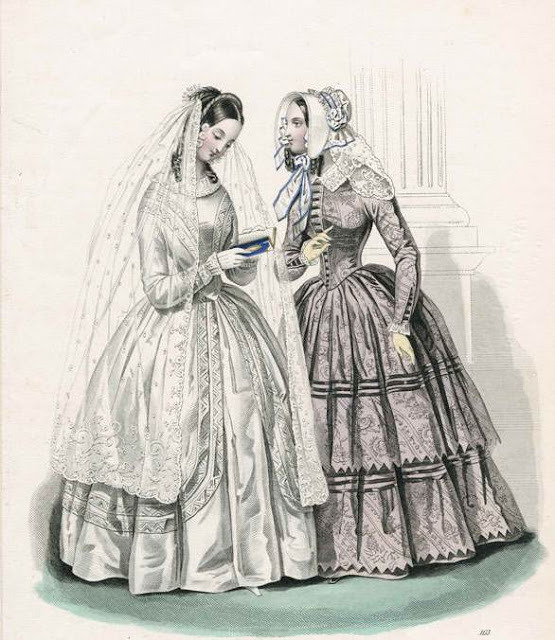
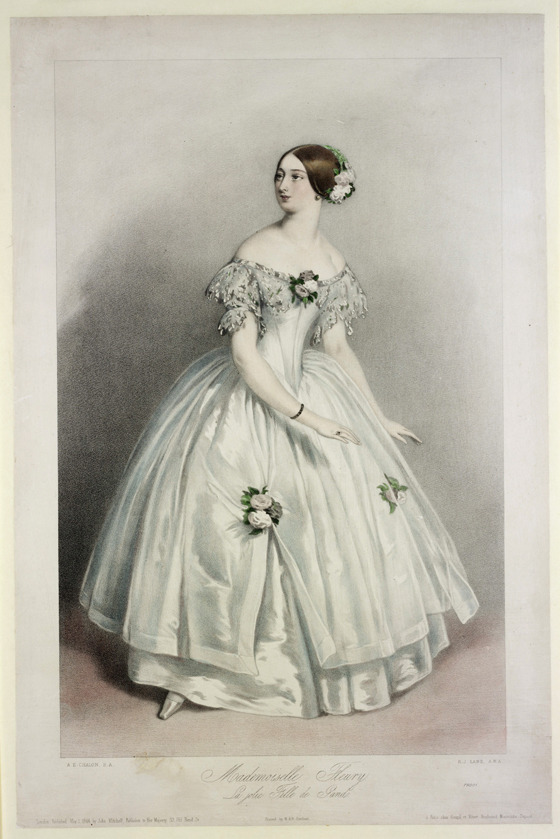



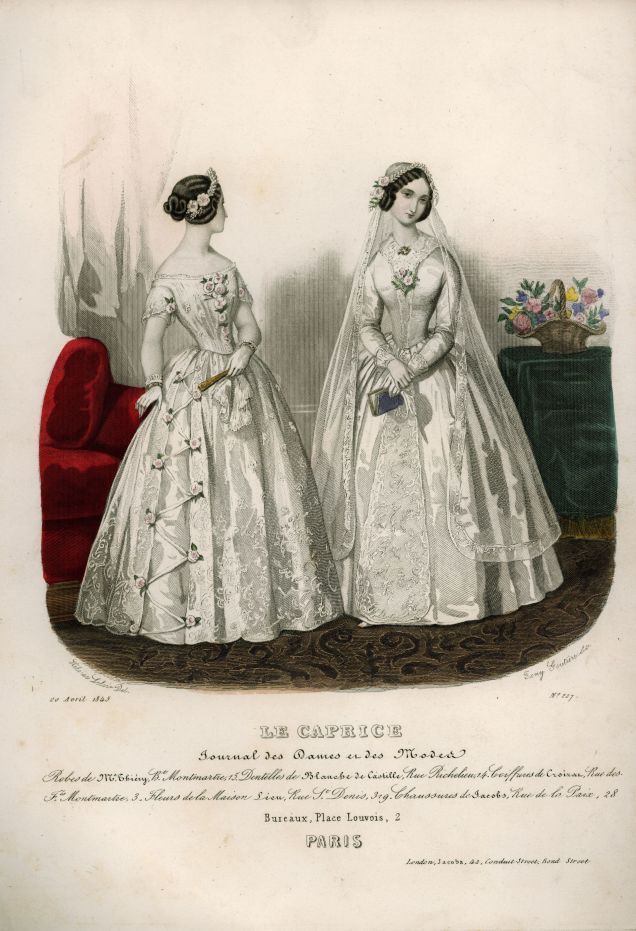
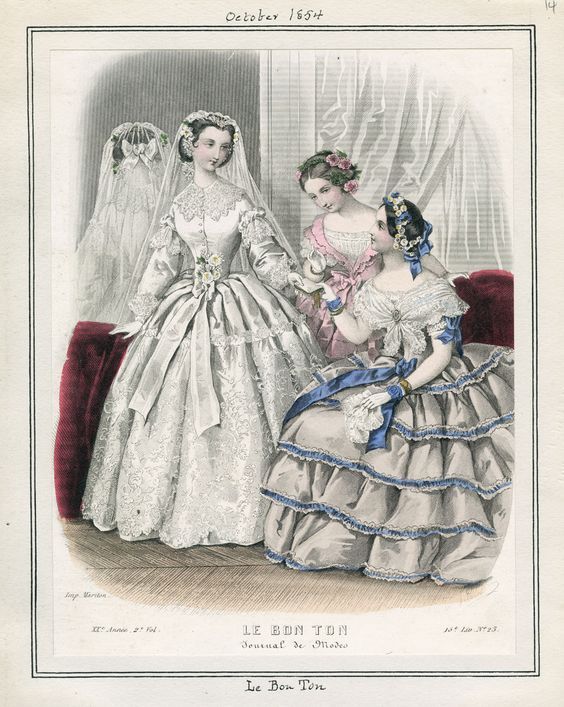



Auguste Toulmouche, The Reluctant Bride, 1866

Firs Zhuravlev, Before the wedding, 1874




